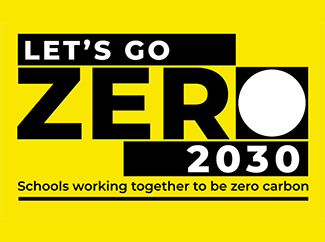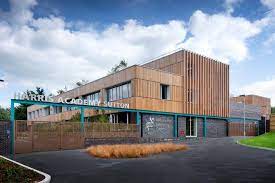consent_cookie
Duración: 1 year
Stores the user's cookie consent state
12-08-2021
Reducing your school’s carbon emissions is not as difficult as it may seem. Alex Green from the Let's Go Zero campaign outlines some inspiring and money-saving ideas to get your school started There are many ways schools can reduce their carbon impact, and just as many reasons to do so – from protecting the planet to lowering heating bills and inspiring students and their families. So what could make a big difference in your school? Here are some bright ideas from the Let’s Go Zero campaign, a movement uniting schools across the UK aiming to become zero carbon.
Let's Go Zero brings together UK schools that want to become zero emission centers by 2030. Therefore, it is a reference for the entities that participate in the Low Carbon Schools Pilot Project that the Fundación Pueblo para Pueblo has been developing since last year in the province of Yunnan, China, with funding from the European Union and the collaboration of an outstanding group of local organizations.
Energy use
Energy use is a great place to start. “Quick wins” include school switch-off campaigns, encouraging students and staff to power down lights and equipment when not needed. These are a great way to involve young people directly, a vital ingredient in any school’s zero carbon work.
A move to green electricity tariffs can also create a big impact, On November 1 last year, Oasis Community Learning switched 41 of its 52 academies to 100 per cent renewable energy tariffs. Oasis has also installed solar panels at 14 of its schools. On-site energy generation can dramatically lower fuel bills.
At King’s Academy Ringmer School in East Sussex, the main school complex and swimming pool are heated by a biomass boiler using woodchip sourced from local woodland. As a result, 70 per cent of energy for heat is generated on-site.
School buildings
Improving the fabric of school buildings is another powerful tool. When it comes to creating energy-efficient buildings, there are a range of options for new and existing schools – with big investment triggering big savings.
Possibilities include the Passivhaus Standard – an approach that uses carefully selected materials, ventilation, shading and other non-mechanical ingredients to minimise the need for heating and cooling. The UK’s first Passivhaus secondary school – Harris Academy Sutton – opened in London in 2019.
Project architect Christian Dimbleby, who designed the building, told Passive House Plus (Smith, 2020): “We’ve proved it’s possible to design large high-performing buildings with low-carbon and great aesthetics. There can be a little bit of extra cost – between four and eight per cent – but it comes back in the long-term running costs and improvements.”
This success shows us how the schools of the future might look. But of course 72 per cent of England’s school buildings will still be in use in 2050. However, even in existing schools simple upgrades to walls, roofs, doors and windows can deliver significant savings. Prioritise insulation in the roof space, then external wall insulation, to lower energy use and costs. This will also keep the school cooler in summer. Double or triple-glazing also provides immediate energy and cost savings.


